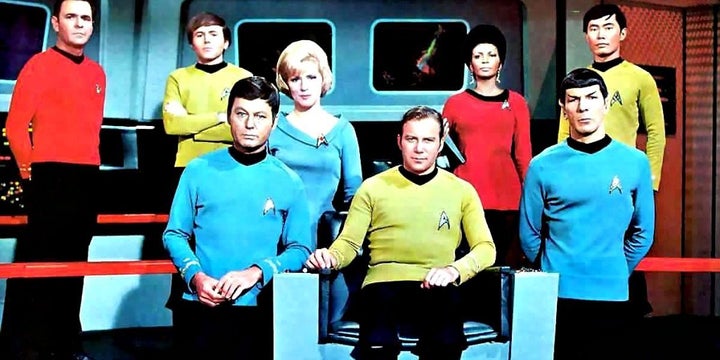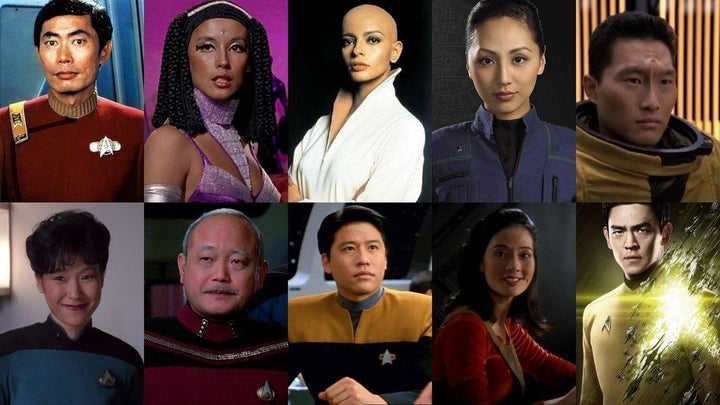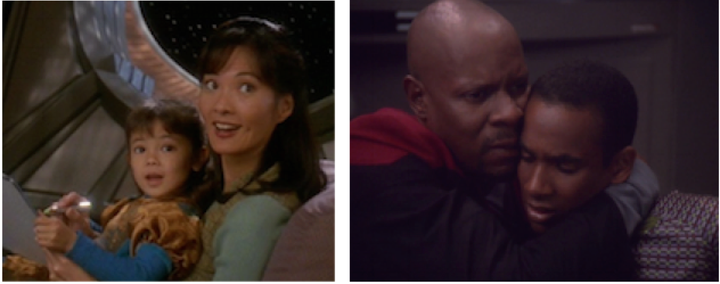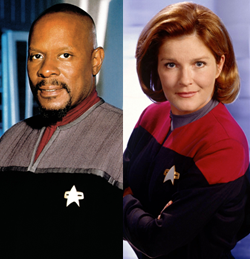
In middle school, I started watching a new series called Star Trek: The Next Generation (1987-1994). As a young immigrant, I was inspired by the myriad of races and alien species that came together on the Starship Enterprise. It was the first time I saw Asian Americans portrayed not as foreigners or exotics, but as members of a diverse starship crew.

Asian Americans in Star Trek
Since its original debut on NBC in 1966, Star Trek has served as an inspiration for youth of color. As a child, Whoopi Goldberg was encouraged by Star Trek’s Uhura—the first black woman she saw on television that wasn’t “a maid.” Nichelle Nichols—who played Uhura in the original Star Trek series—describes how Whoopi Goldberg convinced creator Gene Roddenberry to let her join the cast of Star Trek: The Next Generation.
Star Trek has long been at the forefront of challenging cultural norms. Besides a racially diverse cast, Star Trek was the first show to portray an interracial kiss in 1968. This was highly controversial since Hollywood had banned depictions of interracial relationships from 1930 to 1956 and U.S. laws forbade interracial marriages up until 1967.
The rebooted Star Trek films continue to push the boundaries of how studio films represent people of color, as seen in the interracial/interspecies romance between Uhura (portrayed by Zoe Saldana) and Spock (portrayed by Zachary Quinto) and the introduction of Sulu’s husband (briefly portrayed by Doug Jung; Sulu is portrayed by John Cho).

Spock and Uhura / Sulu's family
Besides pushing cultural boundaries, Star Trek has portrayed people of color not as tokens, but as complex characters with relationships. The father-son relationship of Benjamin and Jake Sisko (Star Trek: Deep Space Nine) and Keiko O’Brien’s interracial family (Star Trek: The Next Generation and Star Trek: Deep Space Nine) are seldom portrayed on television.

Keiko O'Brien (played by Rosalind Chao) / Benjamin Sisko (played by Avery Brooks) and Jake Sisko (played by Cirroc Lofton)
In the 1990s, Star Trek also ventured beyond the white-male-lead frontier in two spinoff series: Star Trek: Deep Space Nine and Star Trek: Voyager. Casting a black male lead was rare in the 1990s when none of the 26 new series on broadcast television in 1999 cast a single lead of color. When Hollywood portrays people of color not as leaders and heroes but as criminals or sidekicks, audiences are more likely to view them as such in real life.

Captain Benjamin Sisko (played by Avery Brooks) and Captain Kathryn Janeway (played by Kate Mulgrew)
Despite the precedent set by Star Trek, Hollywood continues to exclude people of color and women from lead roles. In 2014, people of color were underrepresented by a factor of 5 to 1 in broadcast television leads , while only 32 of the top 100 films in 2015 had a female lead or co-lead.
In 50 years, Star Trek has boldly gone where no one has gone before. Its newest iteration, Star Trek: Discovery, is set to debut in January 2017 with Sonequa Martin-Green as the lead.

Sonequa Martin-Green cast as the lead of Star Trek: Discovery
While Star Trek has privileged white male plots over those of characters of color, the storylines have offered inclusive possibilities beyond its time. Unfortunately, rather than expanding the diverse future envisioned by Star Trek back in 1966, Hollywood has light years to go when it comes to inclusion and diversity.

Me with the legendary George Takei at the Japanese American National Museum's #NewFrontiers exhibit--opening night, March 11, 2017.
Nancy Wang Yuen is the author of Reel Inequality: Hollywood Actors and Racism.
